|
Books Should Be Free Loyal Books Free Public Domain Audiobooks & eBook Downloads |
|
|
Books Should Be Free Loyal Books Free Public Domain Audiobooks & eBook Downloads |
|
Historical Fiction |
|---|
|
Book type:
Sort by:
View by:
|
By: Charles Morris (1833-1922) | |
|---|---|
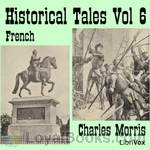 Historical Tales, Vol VI: French
Historical Tales, Vol VI: French
Volume VI of a series containing anecdotes and stories, some well-known, others less so, of particular countries. This fifth volume covers the history of France from the Hun invasion of Europe in the 5th century up to the Prussian War, describing history for children and young adults in an exciting and novel manner. (Introduction by Kalynda) | |
By: Baroness Emmuska Orczy (1865-1947) | |
|---|---|
 The Emperor's Candlesticks
The Emperor's Candlesticks
When a group of Russian anarchists kidnap a Russian prince in Vienna there are repercussions. On learning that the Cardinal d'Orsay has agreed to convey some hollow candlesticks from the Emperor to the Princess Marionoff in St Petersburg, two spies both see the possibility of using them to convey messages safely into Russia. One is an eager young idealist involved in the plot against the prince, the other is Madame Demidoff, a beautiful agent of the Tsar. When the candlesticks go missing at the border, the two engage in a race to get them back, both realizing that their very lives could depend on the retrieval. | |
By: Harriet Beecher Stowe (1811-1896) | |
|---|---|
 The Pearl of Orr's Island
The Pearl of Orr's Island
Go on a journey to the coast of Maine and immerse yourself in the picturesque community on Orr’s Island. See the raindrops glistening on the pine needles and hear the waves crashing on the rocks. This is a tale of romance, tragedy, crusty sea captains, an impetuous boy, a loving girl, complete with village gossips and twists in the plot. | |
By: Neil Munro (1863-1930) | |
|---|---|
 Doom Castle
Doom Castle
Doom Castle is the story of young Count Victor's journey to Scotland after the Jacobite Rebellion, searching for a traitor to the Jacobite cause as well as a mysterious man under the name of "Drimdarroch", whom he swore revenge. After a perilious journey, Count Victor arrives at Doom Castle as a guest of the enigmatic Baron of Doom, his two strange servitors and his beautiful daughter... (Summary by Carolin) | |
By: Louis Ulbach (1822-1889) | |
|---|---|
 The Steel Hammer
The Steel Hammer
A large inheritance greatly transforms the lives of three people: a good man, who would have inherited at least a part of the fortune if his uncle hadn't passed away before he could alter the will, his cousin, who inherits all but is prevented from enjoying it, and a gambler, who is in desperate need of such a sum of money. The connection of the three ends fatal for at least one of them. | |
By: Charles Waddell Chesnutt (1858-1932) | |
|---|---|
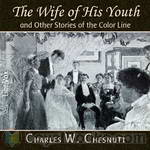 The Wife of His Youth and Other Stories of the Color Line
The Wife of His Youth and Other Stories of the Color Line
Published in 1899, The Wife of His Youth and Other Stories of the Color Line is a collection of narratives that addresses the impact of Jim Crow laws on African Americans and white Americans of the South. Many of Chesnutt's characters are of mixed-race ancestry which sets them apart for a specific yet degrading kind of treatment from blacks and whites. These stories examine particularly how life in the South was informed through a legacy of slavery and Reconstruction—how members of the “old dominion” desperately struggled to breath life into the corpse of an antebellum caste system that no longer defined the path and direction in which this country was headed... | |
By: Henry Rider Haggard (1856-1925) | |
|---|---|
 Pearl Maiden
Pearl Maiden
This is the story of Miriam, an orphan Christian woman living in Rome in the first century. She falls in love with a Roman officer, but knows that her Jewish childhood playmate loves her too and will do anything in order to get her love in return. | |
By: Cardinal Nicholas Patrick Wiseman (1802-1865) | |
|---|---|
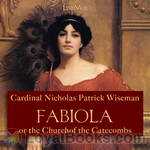 Fabiola or The Church of the Catacombs
Fabiola or The Church of the Catacombs
This historical novel is set in Rome in the early 4th century AD, during the time of the cruel persecution of Christians under the Emperor Diocletian. The heroine of the book is Fabiola, a young pagan beauty from a noble Roman family. Fabiola seems to have everything, including a superior education in the philosophers, yet under the surface, she is not content with her life. One day, in a fit of rage, she attacks and wounds her slave girl Syra, who is a secret Christian. The proud, spoiled Roman girl is humbled by Syra's humility, maturity and devotion to her in this situation, and a slow transformation begins... | |
By: Silas Hocking (1850-1935) | |
|---|---|
 Her Benny
Her Benny
A very heart touching story about two homeless children, a brother and sister, living on the streets of Liverpool, England during Victorian times. | |
By: Regina Victoria Hunt | |
|---|---|
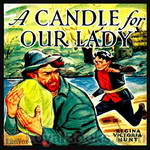 A Candle For Our Lady
A Candle For Our Lady
Dark times for British Catholics hung over England in the days of King Henry VIII. Henry, influenced by the hated Thomas Cromwell, fell into opposition with them, suppressing them, and closing religious houses. In that period a famous shrine, erected centuries earlier at Walsingham and dedicated to our Lady, drew people from far and near for it was a favorite place of pilgrimage and the site of many miracles.On their grandmother's and uncle's farm, far removed from this scene of persecution, were Jemmy Reynolds and his sister Joan... | |
By: Henry Peterson (1818-1891) | |
|---|---|
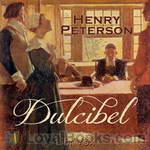 Dulcibel A Tale of Old Salem
Dulcibel A Tale of Old Salem
Dulcibel is a young, pretty and kind-hearted fictional character charged with Witchcraft during the infamous Salem Witch trials. During this time there is a group of "afflicted girls" who accuse Dulcibel and many others of Witchcraft, and during their trials show "undoubtable" proof that these people really are Witches. Will Master Raymond, Dulcibel's lover, be able to to secure Dulcibel's release from jail? Or will Dulcibel's fate be the gallows like so many other accused Witches of her time? | |
By: Owen Wister (1860-1938) | |
|---|---|
 Padre Ignacio, Or The Song Of Temptation
Padre Ignacio, Or The Song Of Temptation
Padre Ignacio has been the pastor of California mission Santa Ysabel del Mar for twenty years. In 1855 a stranger rides into the mission bringing news and a spiritual crisis. It's really more of a novella than a novel. | |
By: Charles Major (1856-1913) | |
|---|---|
 When Knighthood Was in Flower
When Knighthood Was in Flower
Set during the Tudor period of English history, When Knighthood Was in Flower tells the tribulations of Mary Tudor, a younger sister of Henry VIII of England who has fallen in love with a commoner. However, for political reasons, King Henry has arranged for her to wed King Louis XII of France and demands his sister put the House of Tudor first, threatening, "You will marry France and I will give you a wedding present – Charles Brandon's head!" | |
By: Anthony Munday (1560? -1633) | |
|---|---|
 Sir Thomas More
Sir Thomas More
Sir Thomas More is a collaborative Elizabethan play by Anthony Munday and others depicting the life and death of Thomas More. It survives only in a single manuscript, now owned by the British Library. The manuscript is notable because three pages of it are considered to be in the hand of William Shakespeare and for the light it sheds on the collaborative nature of Elizabethan drama and the theatrical censorship of the era. The play dramatizes events in More's life, both real and legendary, in an episodic manner in 17 scenes, unified only by the rise and fall of More's fortunes. | |
By: William Shakespeare (1554-1616) | |
|---|---|
 Reign of King Edward the Third
Reign of King Edward the Third
| |
By: Alessandro Manzoni (1785-1873) | |
|---|---|
 Betrothed (I Promessi Sposi)
Betrothed (I Promessi Sposi)
The Betrothed (I Promessi Sposi) presents a kaleidoscope of individual stories, which are all tied together by the story of Lucia and Renzo, two young persons of humble origin that are deeply in love with one another. However, despite their great attachment, they are prevented from marrying by the cruel Don Rodrigo, who has himself cast an eye on the beautiful and pious Lucia. Don Rodrigo menaces the priest who was to perform the wedding ceremony, who then refuses to do his duty. Thus threatened and prevented from being married, the couple is separated, and the narration follows each of them on their struggle to unite again... | |
By: Pauline Elizabeth Hopkins (1859-1930) | |
|---|---|
 Hagar's Daughter. A Story of Southern Caste Prejudice
Hagar's Daughter. A Story of Southern Caste Prejudice
Hagar's Daughter was first published serially in "The Colored American Magazine" in 1901-1902 by Pauline E. Hopkins, a prominent African-American novelist, journalist, historian, and playwright. The book was described as "a powerful narrative of love and intrigue, founded on events which happened in the exciting times immediately following the assassination of President Lincoln: a story of the Republic in the power of Southern caste prejudice toward the Negro." (From the January, 1901, issue of "The... | |
By: George Eliot (1819-1880) | |
|---|---|
 Felix Holt, The Radical
Felix Holt, The Radical
"Harold Transome is a landowner who goes against his family's political tradition (much to his mother's distress), while Felix Holt is a sincere radical. The setting of the book, the 1832 parliament election, is used to discuss the social problems of that time. A secondary plot involves Esther Lyon, the stepdaughter of a minister who is the real heiress to the Transome estate, with whom both Harold Transome and Felix Holt fall in love. Esther loves poor Felix Holt, but would she choose a comfortable life with Harold Transome?" | |
By: Leo Tolstoy (1828-1910) | |
|---|---|
 War and Peace Vol. 1 (Dole Translation)
War and Peace Vol. 1 (Dole Translation)
”War and Peace” is a panoramic novel: It is its own justification, and perhaps needs no introduction. It always reminds the translator of a broad and mighty river flowing onward with all the majesty of Fate. On its surface, float swiftly by logs and stumps, cakes of ice, perhaps drowned cattle or men from regions far above. These floating straws, insignificant in themselves, tell the current. Once embark upon it, and it is impossible to escape the onward force that moves you so relentlessly. What landscapes you pass through, what populous towns, what gruesome defiles, what rapids, what cataracts! The water may be turbid, or it may flow translucent and pure, – but still it rushes on... | |
By: Anthony Trollope (1815-1882) | |
|---|---|
 Christmas at Thompson Hall
Christmas at Thompson Hall
"A Mid-Victorian Christmas Tale"; tells of a night time encounter between relatives who had never before met, resulting in minor injuries, embarassment, and Trollope's usual 'nice' social interactions. | |
By: Castello Newton Holford (1844-1905) | |
|---|---|
 Aristopia: A Romance-History of the New World
Aristopia: A Romance-History of the New World
Aristopia (published 1895) is truly an alternative history. It is an imagination of how the continent of North America might have developed if one man with the vision, altruism and determination to build a state for the benefit of all its people had been in the happy position of having wealth enough to make his dream a reality. It is an interesting book which deserves its place in literary history largely for being the first novel-length example of its genre. It is written, not as a novel, but as unvarnished history... | |
By: Isabella Varley Banks (1821-1897) | |
|---|---|
 Manchester Man
Manchester Man
Jabez Clegg, the Manchester man, floats into this historical novel in 1799, carried downstream by the River Irk in flood. Jabez's rise to commercial success mirrors the rise of the city at the heart of the industrial revolution. Mrs George Linnaeus Banks (nee Isabella Varley) weaves a web of historical fact and fiction in a fast-paced story built around the rivalry between the Jabez and his nemesis Laurence Aspinall, and the fate of Augusta Ashton, who is loved by both but loves only one. An entertaining fictional journey through the early 19th century history of the city of Manchester, the book also has serious points to make about women's choices and domestic violence. | |
By: Margaret S. Comrie (1851-?) | |
|---|---|
 Key to the Riddle
Key to the Riddle
Young Azerole Montoux and her brother Leon find themselves separated from their family by the religious persecutions of 1686. Threatened by the authorities and forced to depend on strangers, they must decide whether they can trust God to make sense out of the riddle of their lives. | |
By: Nathan Gallizier (1866-1927) | |
|---|---|
 Under the Witches' Moon
Under the Witches' Moon
The scene is Rome, 935 A.D. Thirty-year-old Tristan, dressed as a pilgrim, overhears a conversation between Basil, the Grand Chamberlain, and Il Gobbo, his assistant. After the two have left, Tristan continues to observe the revelry on the Eve of St. John. Suddenly a chariot containing a beautiful woman stops before him. They exchange words. He kisses her hand. Then she moves on, leaving him to ponder her beauty as he returns to the inn where he is staying. That night he has an enchanting and haunting dream of him together with another woman... | |
By: Florence Roma Muir Wilson (1891-1930) | |
|---|---|
 Death of Society: A Novel of Tomorrow
Death of Society: A Novel of Tomorrow
A weary survivor of the Great War, Major Rane Smith wanders in a great ennui amidst the mystical beauties of the fjords of Norway after the War, seeking a spiritual renewal. Deep in the forest he stumbles fatefully upon the strange, almost elvish home of Karl Ingman, an iconoclastic old Ibsen scholar. There Major Smith meets Ingman's two beautiful young daughters and his eldritch wife Rosa, entering into long days of profound dialogue with each member of the family. A rare and exquisite gem of... | |
By: Thomas Dixon, Jr. (1864-1946) | |
|---|---|
 Leopard's Spots
Leopard's Spots
The first in a trilogy of the Reconstruction era - The Leopard's Spots (1902), The Clansman (1905), and The Traitor (1907), parts of this novel were incorporated in the 1915 silent movie classic, "The Birth Of A Nation". Set in North Carolina, the book explores the extreme social and racial tensions of the period as Confederates attempt to fight off "reconstructionist" policy, rebuild the war-torn South's economy, and grapple with the rampant "race question" of the day, whether the black and white races can ever live side by side as equals, i... | |
 Traitor
Traitor
Dixon lived through Reconstruction, and believed it ranked with the French Revolution in brutality and criminal acts. The Traitor (1907), the final book in his trilogy which also includes The Leopard’s Spots (1902), and The Clansman (1905), spans a two-year period just after Reconstruction (1870-1872), and covers the decline of the Ku Klux Klan in North Carolina. Dixon, whose father was an early Klan leader, maintained that the original Klan, the “reconstruction Klan” was morally formed in desperation to protect the people from lawlessness, address Yankee brutality, and save southern civilization... | |
By: Nikolai Chernyshevsky (1828-1889) | |
|---|---|
 Vital Question, or, What is to be Done?
Vital Question, or, What is to be Done?
Despised by Dostoyevsky and Tolstoy, What Is To Be Done? is a fascinating, sympathetic story of idealistic revolutionaries in mid-nineteenth century tsarist Russia; translator Nathan Haskell Dole affirms in his preface his conviction that it is a thriller that no one can put down once s/he begins it. Its variegated cast of characters includes Vera Pavlovna, a boldly independent woman in a time of great oppression, and the inspirational radical Rakhmetov. The author wrote the novel from the depths of the infamous Peter & Paul Fortress of St... | |
By: Deborah Alcock (1835-1913) | |
|---|---|
 Spanish Brothers
Spanish Brothers
The daughter of a minister, Deborah Alcock wrote novels on a Christian theme. The Spanish Brothers is set in the sixteenth century and deals with Protestant martyrdom during the Spanish Inquisition. Follow the fortunes of brothers Juan and Carlos as they face the trials and pressures of remaining true to their faith despite hardship, imprisonment, torture and even the agonizing deaths of those dear to them. | |
By: Sir Harry Johnston (1858-1927) | |
|---|---|
 Mrs. Warren's Daughter
Mrs. Warren's Daughter
Mrs. Warren's Daughter is a continuation, in novel form, of George Bernard Shaw's controversial play, Mrs. Warren's Profession. In the play, Vivie Warren, an emancipated young woman recently graduated from University, disavows her mother Kitty when she learns that Kitty's fortune comes from an ownership share in an international string of brothels, and that Kitty herself was once a prostitute. This novel, written by a world renowned botanist, explorer, and colonial administrator, follows Vivie's personal and political adventures through her involvement in the Suffragist movement and the years leading up to and during World War I. | |
By: C. H. Robinson | |
|---|---|
 Longhead: The Story of the First Fire
Longhead: The Story of the First Fire
A fictionalized version of the self-discovery of primitive man, including: fire, cooking, defense and protection, architecture, community, communication, religion, government, and social interaction | |
By: Constance Elizabeth Maud (1857-1929) | |
|---|---|
 No Surrender
No Surrender
Written from the midst of the struggle for female suffrage, Constance Elizabeth Maud’s novel No Surrender (1911) is a Call to Arms. It is a dramatic narrative portraying key players and historical events in the battle for the Vote for Women in Britain. Jenny Clegg is a Lancashire millgirl working long, hard hours under unhealthy conditions in order to support her mother and younger siblings, only to have her father take possession of her savings. In order to seek the rights to improved work conditions, equal pay, and many other human rights, she joins the movement of women seeking political representation... | |